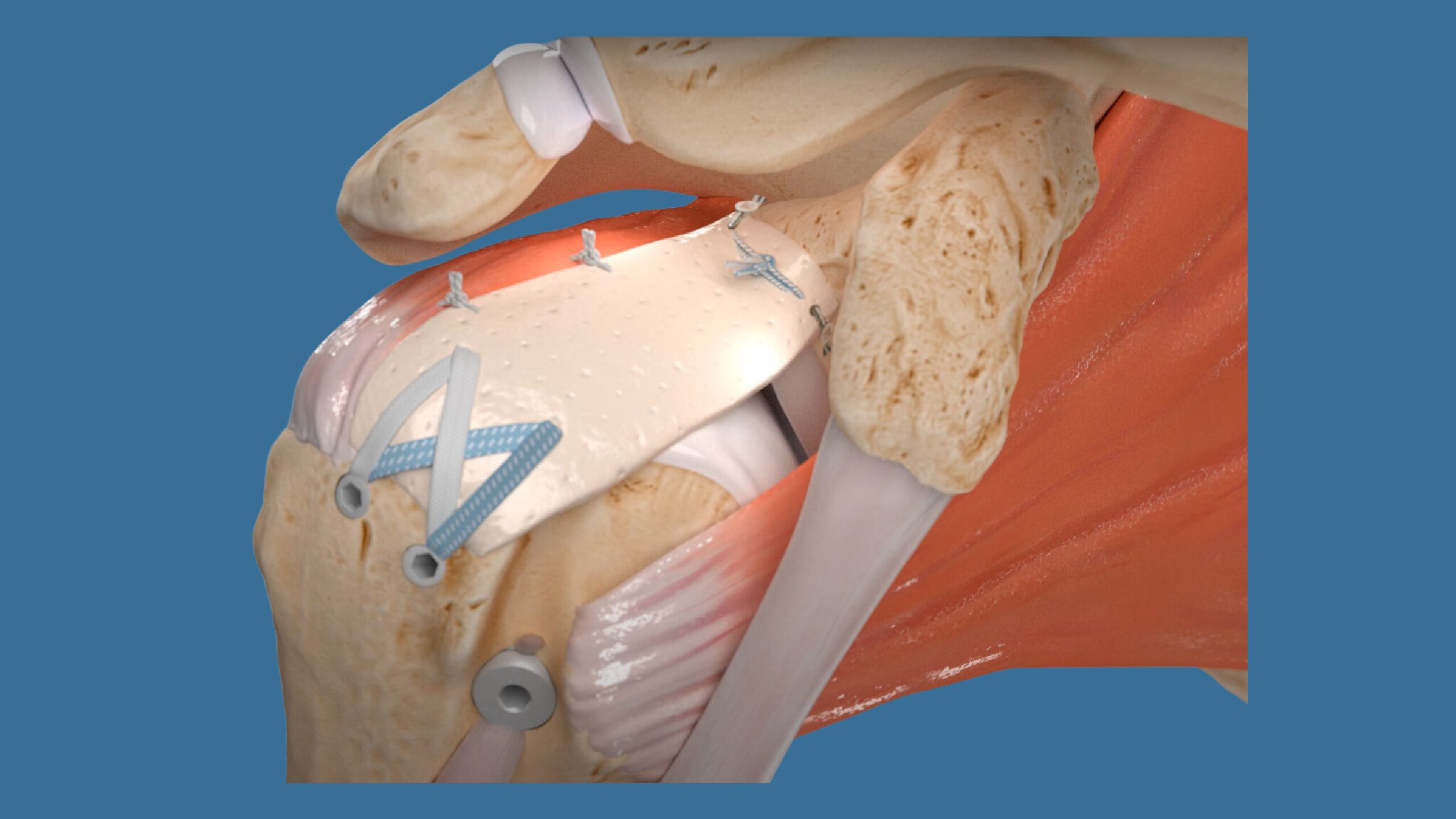Has your patient had or been recommended to have a Superior Capsule Reconstruction?
What is a Superior Capsule Reconstruction (SCR)?
This surgical procedure was first introduced in 2007 by Teruhisa Mihata, MD, PhD from Osaka, Japan.

SCR is an optional surgical procedure to repair severe rotator cuff tears. SCR works by providing the glenohumeral joint with a passive constraint to superior humeral-head translation, optimizing the otherwise dysfunctional rotator cuff force couples.

This surgical intervention may restore motion and relieve pain for patients who have been told that their rotator cuff tear is so severe that it can’t be repaired or those who may have failed non-operative management. Patients may also be candidates if they have had a rotator cuff repair surgery that failed to heal properly. SCR is not recommended for patients who have significant arthritis in the shoulder.
The procedure is performed arthroscopically, typically under regional anesthesia combined with sedation. Most patients go home the same day.
SCR works by providing the glenohumeral joint with a passive constraint to superior humeral-head translation, optimizing the otherwise dysfunctional rotator cuff force couples. Using this approach, the surgeon attaches a human tissue graft from the humeral head to the glenoid. While this graft does not replace the supraspinatus tendon, it performs a similar function to restore the force couple and keep the head of the humerus centered in the glenoid fossa during active shoulder movement.
SCR can prevent shoulder pathology from progressing and decreasing the incidence of arthropathy. When a rotator cuff tear goes unrepaired, the humeral head tends to translate superiorly, possibly contributing to the development of arthritis over time. Superior capsule reconstruction restores alignment of the glenohumeral joint and normalizes its mechanics, which may slow progression of progressive shoulder pathologies.
Surgeons have found that a majority of patients report immediate reduction in pain, often with less post-operative pain than a rotator cuff repair.
Rehabilitation
While pain maybe less of an obstacle, the timeline for physical therapy and returning to normal activities is longer and more gradual than a rotator cuff repair. The purpose of the slow rehabilitation is to promote graft healing while minimizing the risk of graft failure.
Recovery time after SCR will vary based on patient’s age, health and underlying medical conditions. Typically, the average recovery time for superior capsular reconstruction can be 8-12 months.


